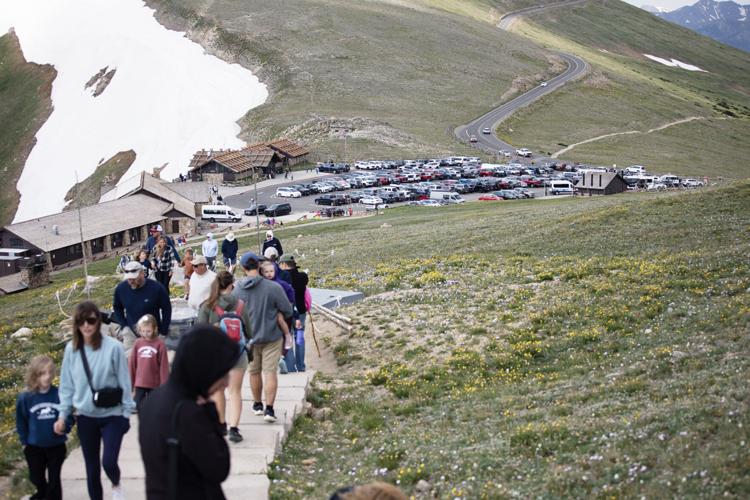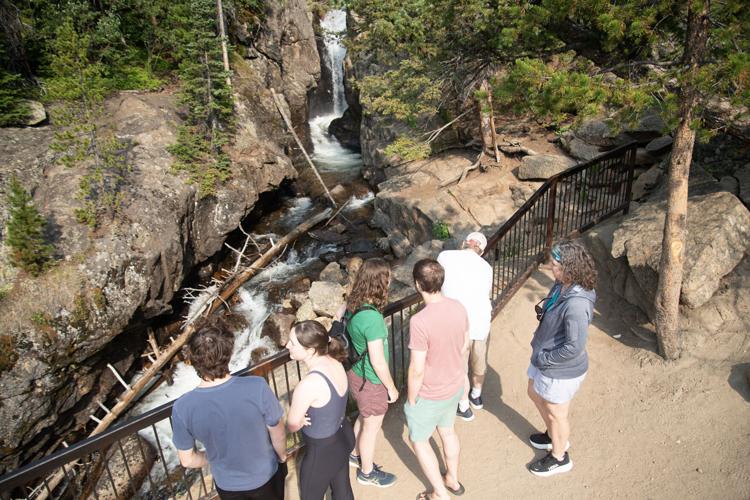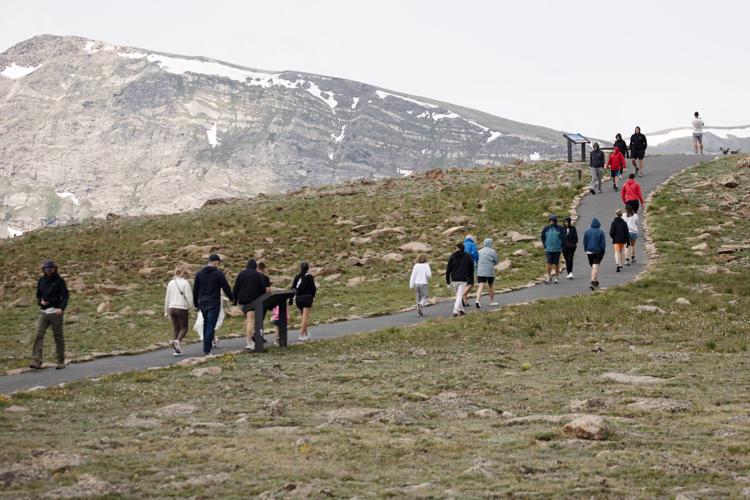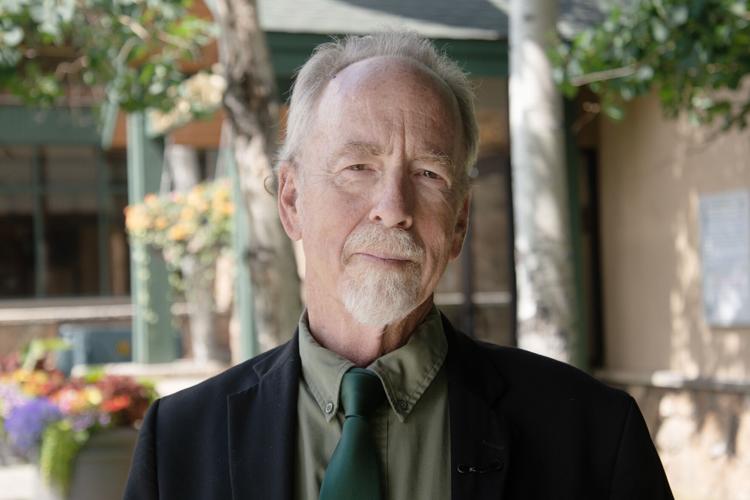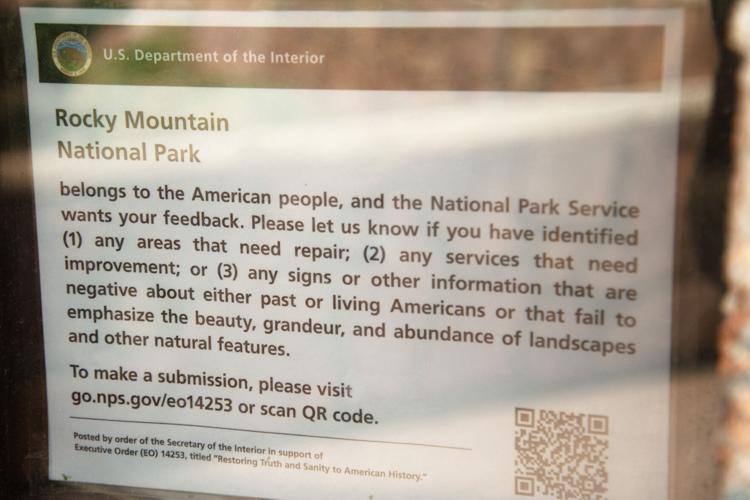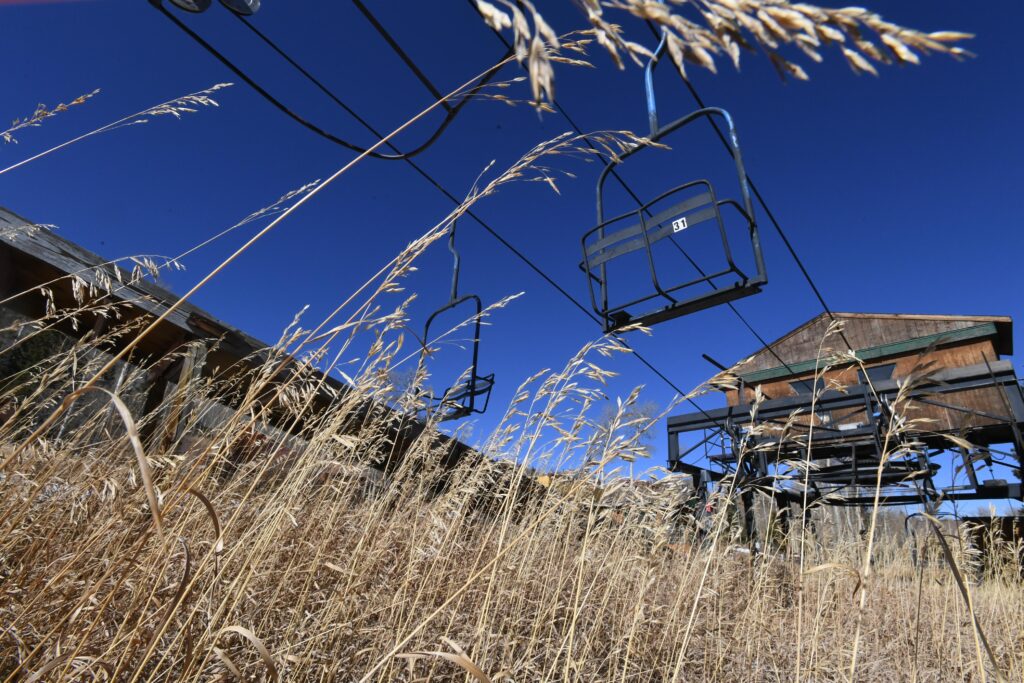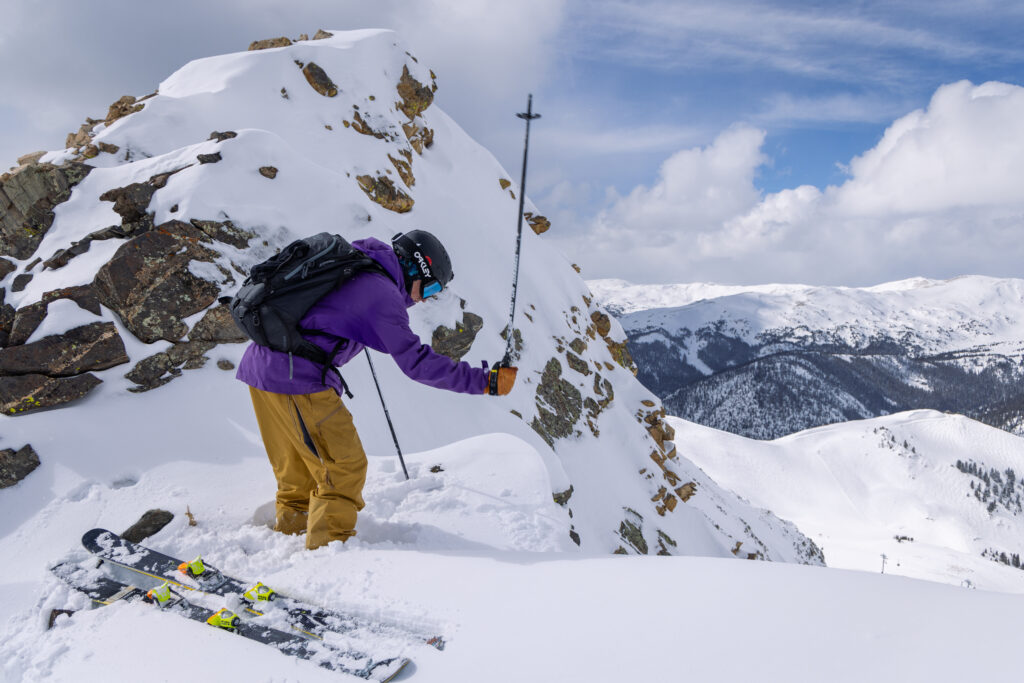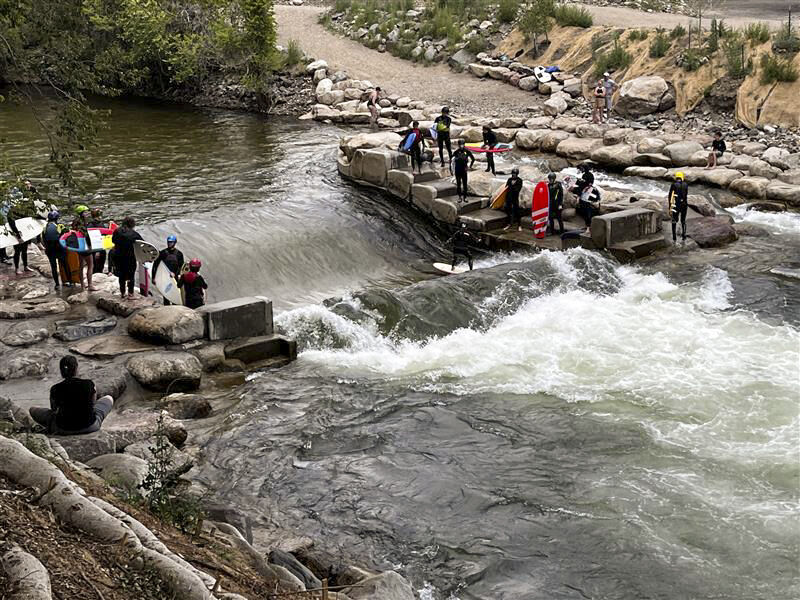Rocky Mountain National Park defies predictions after NPS staff cuts

Tom Hellauer/Denver Gazette
At the height of the busy season at Rocky Mountain National Park, the town at its foot, Estes Park, crawled with visitors one Wednesday in the middle of summer.
The parking lot of the Beaver Meadows Visitor Center was almost full, the bathrooms were clean and park staff assisted visitors with a map and a smile.
People who spend a lot of time in parks, including a rafting guide and photographer, said they have not seen any impact to the park this year since cuts were made.
The normality stood in sharp contrast to the worries after the Trump administration imposed a mass layoff at the National Park Service and at other federal agencies in February. At the time, many predicted a dire situation — of delayed openings, closed campgrounds, perhaps canceled guided tours and even uncollected trash and uncleaned restrooms.
Others speculated that public safety could be at risk.
Closer to Colorado, some also worried about a poor visitor experience at Rocky Mountain National Park; others were anxious about how the layoffs might affect emergency response times.
Not everybody anticipated a “chaotic” summer; one business owner said the park would be “just fine.”
Today, the assessment appeared to bifurcate into two: On the one hand, critics of the cuts said the normality is a “facade” and that underneath it is “total chaos.” Others see a park system that could accomplish the job with less — that fewer people could, in fact, maintain the facilities, thereby saving tax dollars.
A normal summer in Rocky Mountain
With 3.4 million of the park’s 4.2 million annual visitors in 2024 visiting between May and October, the Rocky Mountain National Park is in the middle of its busy season.
In mid-July, a peak month, the park, which contributed more than $500 million to gateway communities in 2023, operated as “normal,” according to visitors and regulars who have been observing operations.
Bathrooms at the Beaver Meadows visitor center were clean, park rangers assisted visitors at the front desk and trails were no more littered than usual.
Kirk Boehm, who has guided river trips with Rapid Transit Rafting since 1995 and spends three-to-four days every week in the park, said he hasn’t seen any impact so far this summer.
Karen and Brian Davis, who relaxed on a bench in Estes Park after taking visiting family members up Trail Ridge Road, also told The Denver Gazette that amenities and trails throughout the park seemed to be the same as they have been.
Photographer Erik Stensland, who owns a studio perched on the edge of Estes Park, also hasn’t seen any major impacts to the park itself. He surmised that’s “because park staff are working really hard to maintain things for visitors.”
Stensland spends almost every single day in RMNP, having hiked almost 15,000 miles on the park’s trails over the last 20 years.
Staff cuts by the numbers
Since January, orders from the Department of Interior have resulted in a 24% cut in the National Park Service workforce, according to a report released in July by several groups, including the National Parks Conservation Association, The Coalition to Protect America’s National Parks, the Association of National Park Rangers and Public Employees for Environmental Responsibility.
Before the report was released, exact layoffs numbers were unclear and difficult to come by. The Denver Gazette made multiple attempts to contact the Rocky Mountain National Park spokesperson via email and telephone for more than a week but did not hear back.
In total, the National Park Service has lost about 4,000 employees to terminations, buyouts, deferred resignations and early retirement buyouts since the Trump administration took office, according to Tracy Coppola with the National Parks Conservation Association.
The agency is also under a hiring freeze until October, delaying seasonal hirings and limiting the agency’s ability to fill vacant positions, which includes more than 100 superintendent positions.
Of the nearly 8,000 seasonal positions in parks, about 4,500 have been filled, according to the NPCA report.
Estes Park Mayor Gary Hall and former Rocky Mountain National Park Ranger Mikayla Moors estimated that 12 employees at Rocky Mountain were laid off on Valentine’s Day. While they were reinstated, Moors said not all took their jobs back.
Moors herself decided to resign, as did other park employees she knew, she said, citing job uncertainty.
According to a 2023 report, Rocky Mountain had 253 full-time employees.
Sheridan Steele, the former superintendent of Black Canyon of the Gunnison, said Black Canyon, Curecanti National Recreation Area and Florissant Fossil Beds — all under the same leadership — had 74 employees.
On Feb. 14, 10 of those employees were laid off, he said, and another three employees took the payout deal.
Prior to the cuts, Black Canyon of the Gunnison had 14 vacancies, positions that were also cut, he said. In total, that makes 27 employees cut from Black Canyon, a third of the workforce.
The Trump administration’s 2026 budget proposal includes a $900 million cut to National Park Service operations. The park system received $3.337 billion in fiscal year 2025, according to estimates.
Interior agency: Cuts are necessary to achieve ‘effectiveness, accountability and cost savings’
The Trump administration has claimed that the work of the Department of Government Efficiency has saved $199 billion, almost $1,236 per taxpayer. The DOGE website includes a leaderboard of agencies that places the interior department at No. 13 out of 22 for the most savings.
Trump — who tasked DOGE to root out “waste, bloat, and insularity” — has cited government accountability as a core reason for the cuts and reorganization of various federal agencies.
In an executive order extending the hiring freeze in late April, Trump said the American people “deserve a Federal workforce that is high-quality, efficient, dedicated to the public interest and no larger than necessary.”
The order cited the Government Accountability Office as saying it has documented how agencies have not used probationary periods as effectively as they could to remove individuals whose employment does not serve the public interest.
“Agencies have often retained and given tenure to underperforming employees who should have been screened out during their probationary period,” the White House said.
In April, Interior Secretary Doug Burgum ordered parks to stay open and keep public amenities accessible.
Protests and worries
Former park superintendents, rangers and others insisted that the cuts will have longer term repercussions.
Parks are “pulling themselves up by the bootstraps” to maintain park function, said Bruce Noble, who retired from a 33-year career with the National Park Service in 2019. His final park position was superintendent of Black Canyon of the Gunnison.
Bill Wade, who retired from a long NPS career as superintendent of Shenandoah in 1997, said many of the layoffs happened behind the scenes to employees who were biologists, archaeologists, historians and senior leaders.
One hundred superintendent positions are vacant and five-of-seven regional director positions are as well, meaning the experienced leadership needed to maintain parks into the future is diminished, he said.
Elsewhere in the country, dozens rallied at the gateway to Montana’s Glacier national park, the Guardian reported, quoting current and former staffers and others as saying the reductions mean workers are unable to keep up the facilities and infrastructure.
Echoing what former park staffers in Colorado are saying, Sarah Lundstrum, Glacier program manager with the National Parks Conservation Association, said things might appear normal, but “it’s like walking down a Hollywood movie set where the front looks great but there’s nothing behind it.”
PHOTOS: Rocky Mountain National Park teeming with wildlife in early August
Water pours over Timberline Falls after several recent rains helped inundate water levels in Rocky Mountain National Park on Sunday, Aug. 11, 2024. A bull elk grazes on wildflowers and tall grasses in Rocky Mountain National Park on Saturday, Aug. 10, 2024. Pikas, a close relative to the rabbit, are abundant above the tree line in Rocky Mountain National Park's various peaks on Saturday, Aug. 10, 2024. Cloud cover blankets the peaks behind Sky Pond in Rocky Mountain National Park on Sunday, Aug. 11, 2024. A marmot makes their home atop the peak of Mt. Ida (12,874 ft.) in Rocky Mountain National Park on Saturday, Aug. 10, 2024. Marmot parents and pups lounge in the summer sun between rain fronts in Rocky Mountain National Park on Saturday, Aug. 10, 2024. Grand Lake, front, and Lake Granby are visible from atop Mt. Ida (12,847 ft.) in Rocky Mountain National Park on Saturday, Aug. 10, 2024. Azure Lake glistens in the morning sun in Rocky Mountain National Park on Saturday, Aug. 10, 2024. A dusky grouse and her chick look for edible plants and small insects atop the Mt. Ida peak in Rocky Mountain National Park on Saturday, Aug. 10, 2024. Hikers work their way up Mt. Ida (12,874 ft.) in Rocky Mountain National Park on Saturday, Aug. 10, 2024. A marmot takes in the morning sun after several recent rain fronts near the top of Mt. Ida in Rocky Mountain National Park on Saturday, Aug. 10, 2024.


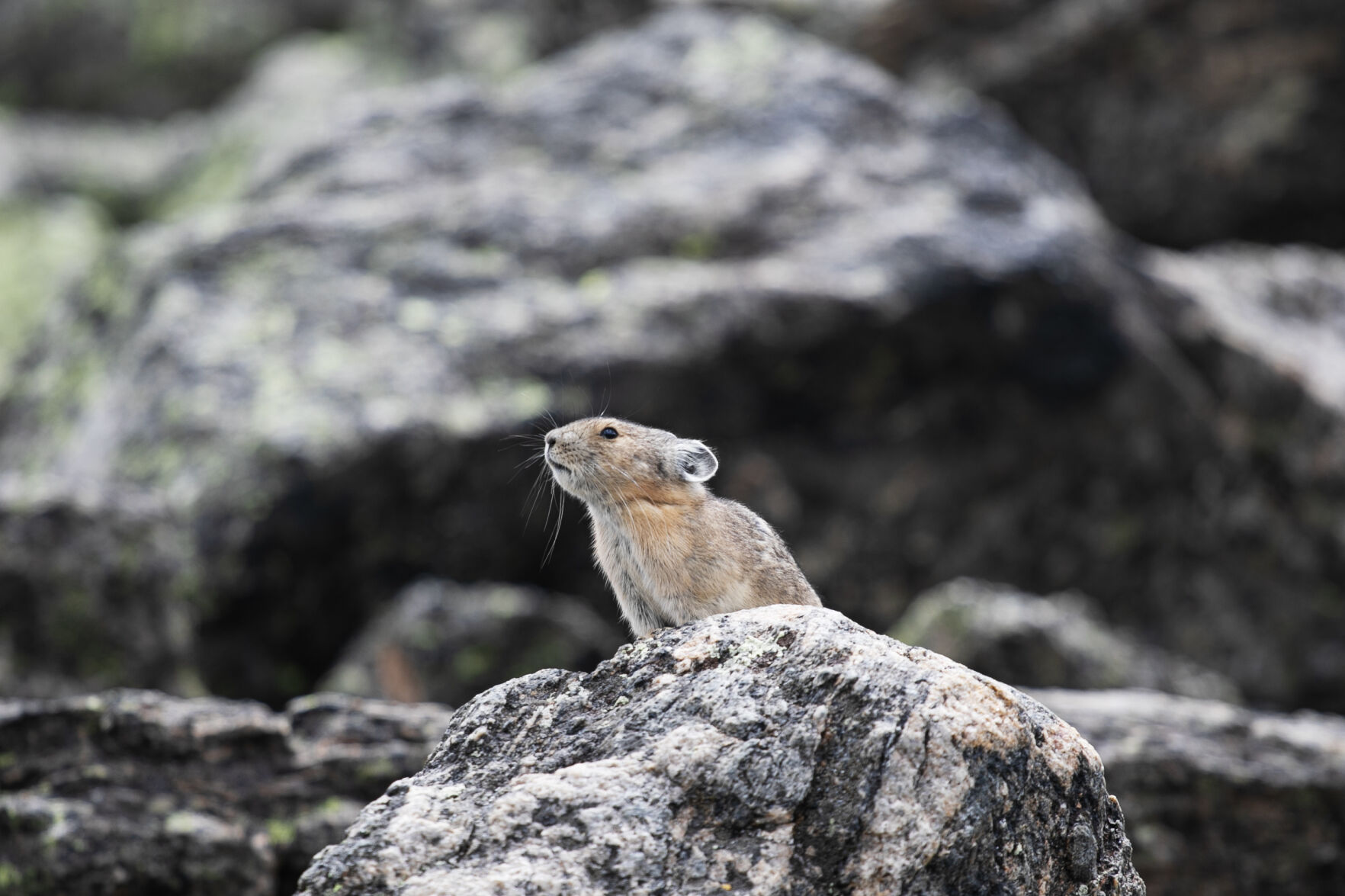
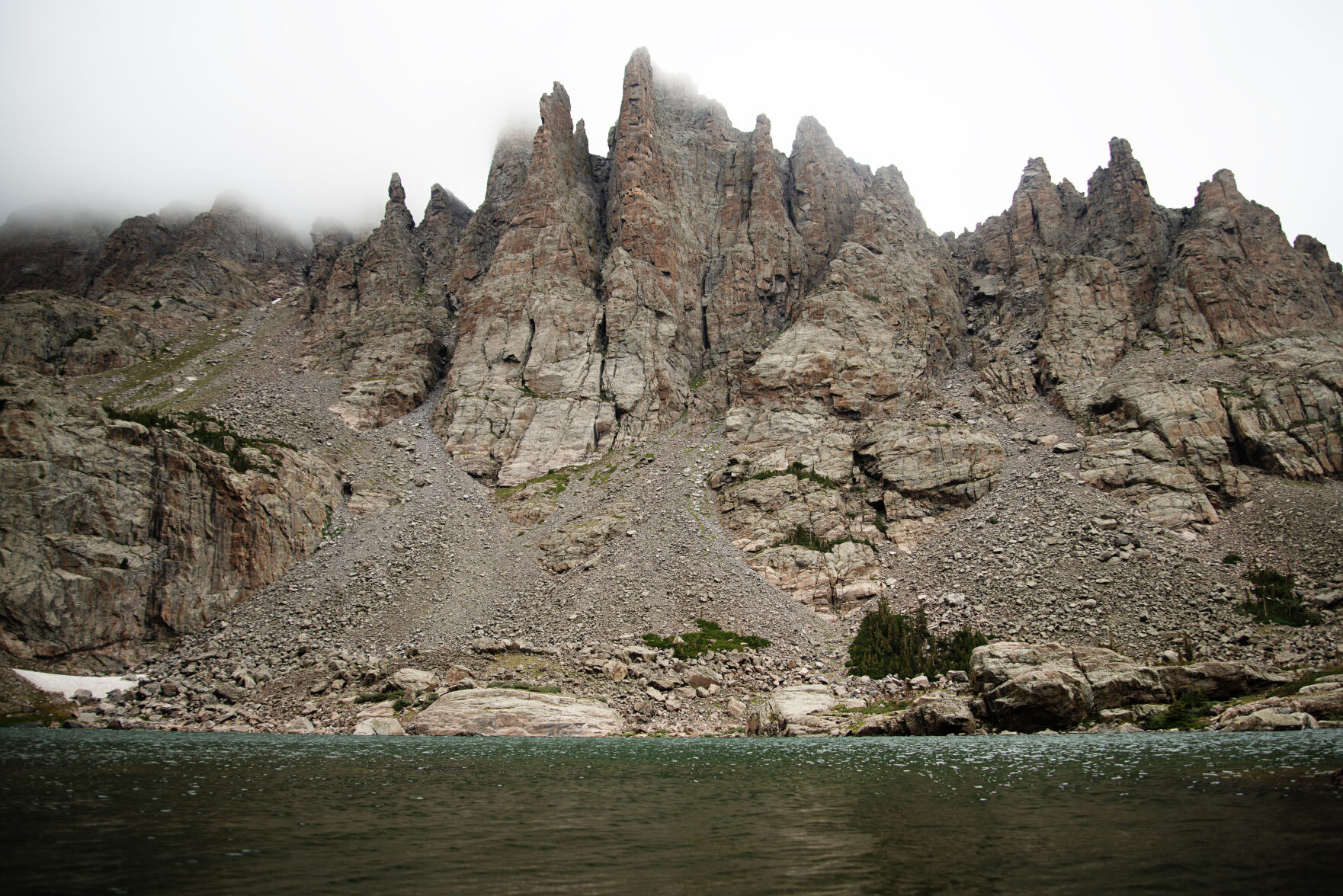
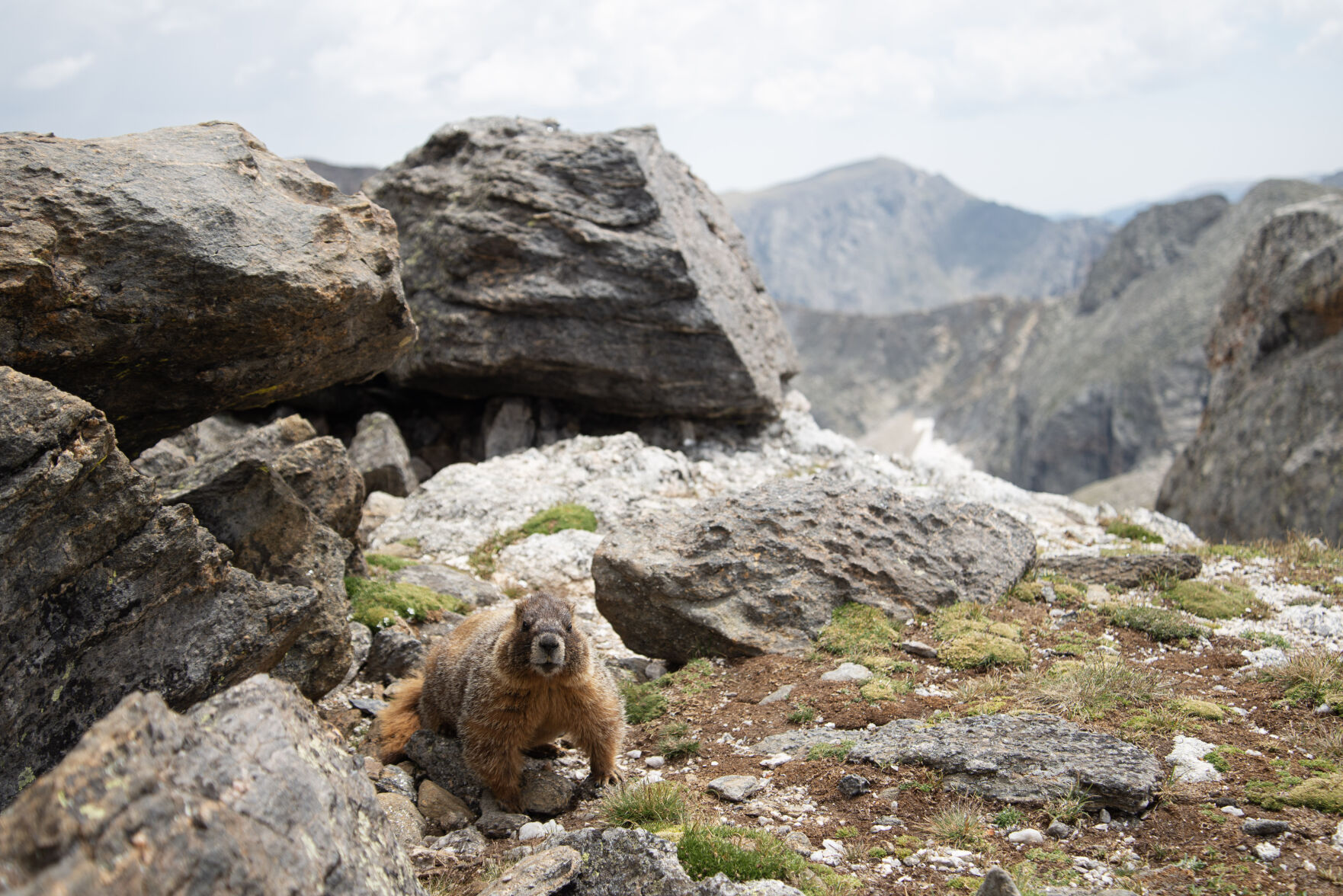




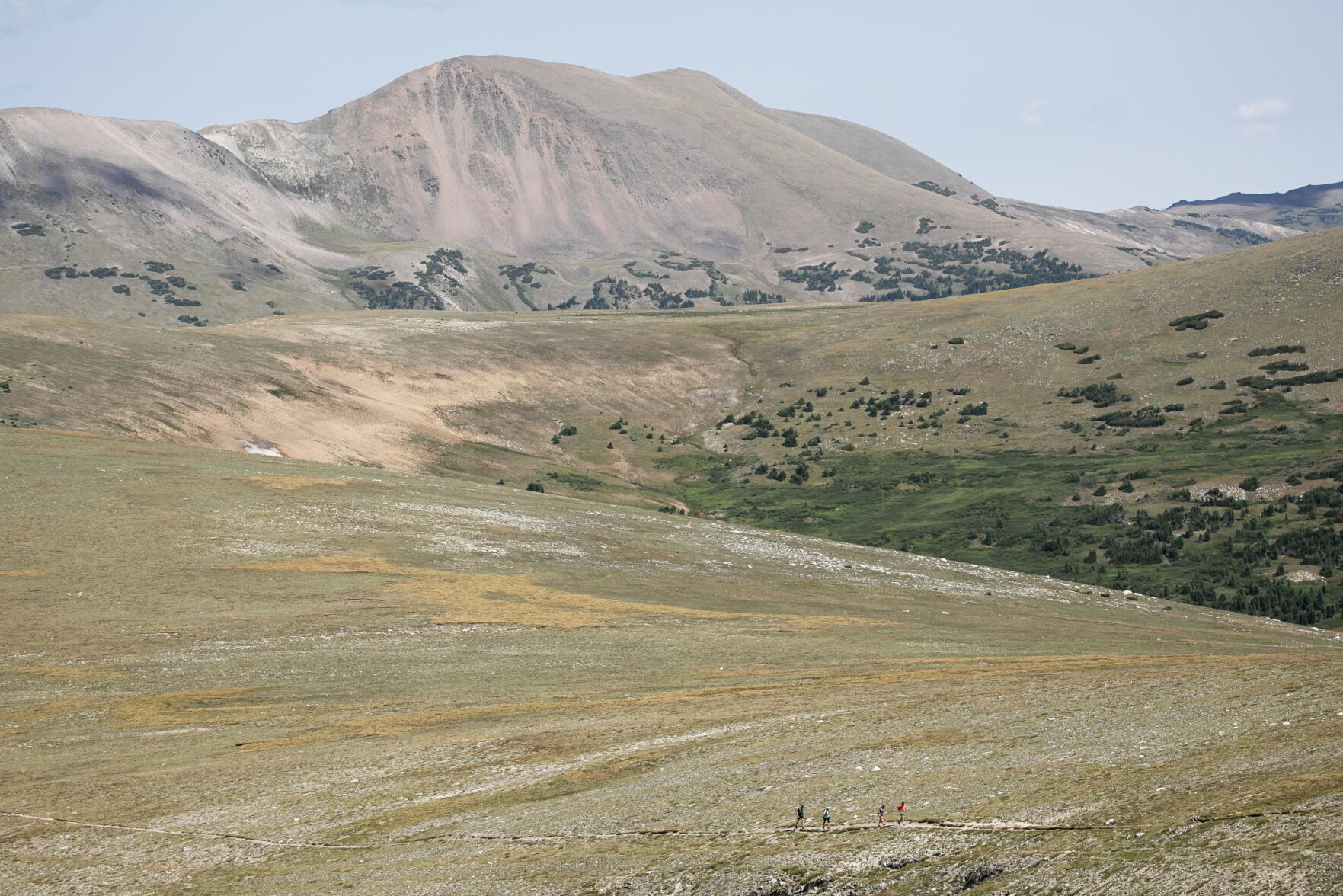
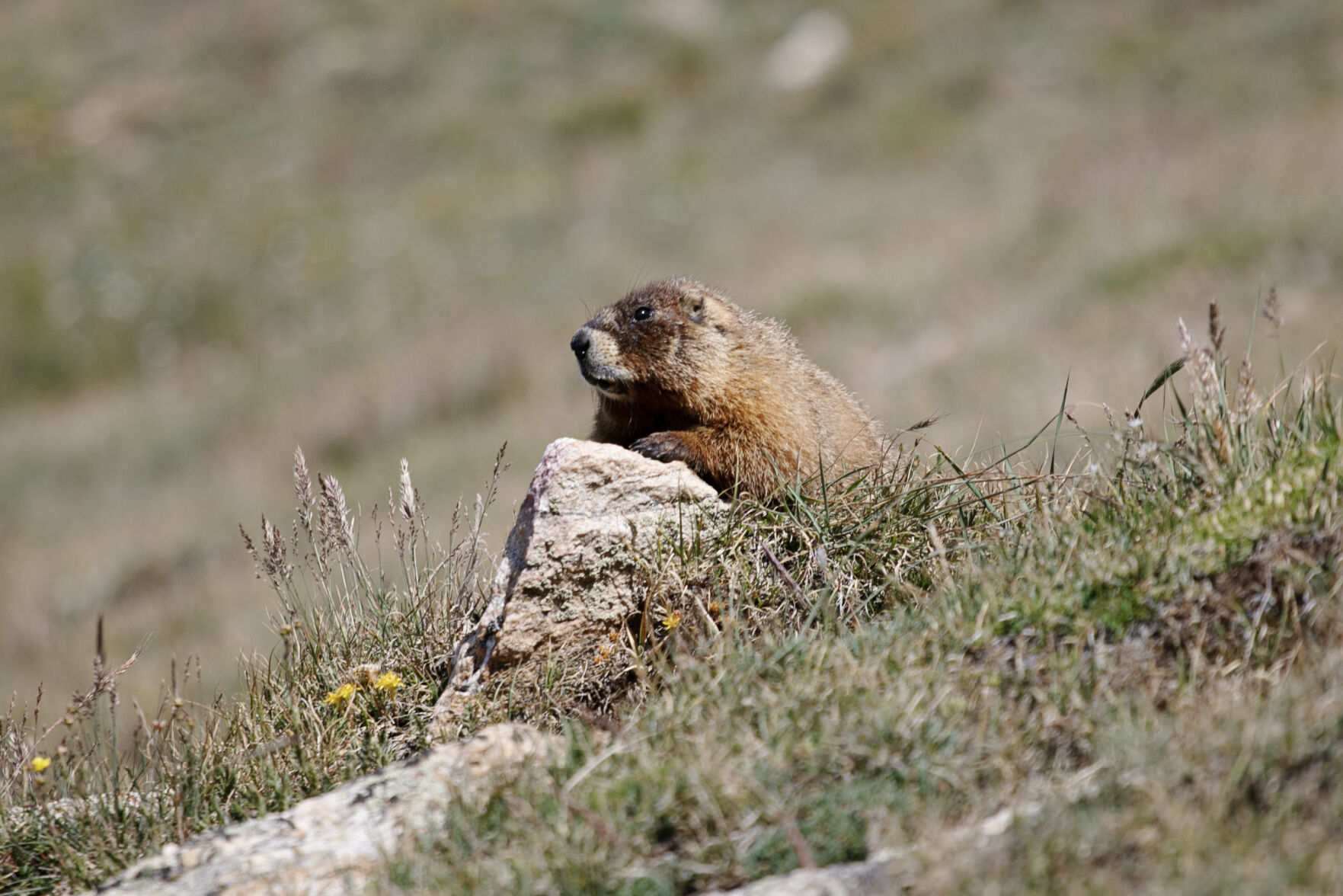
Not everybody predicted a dire situation at Rocky Mountain National Park when the cuts were announced.
Back in April, Brian Chick, who owns The Christmas Shoppe in Estes Park, had observed that, since January, the town has been “business as usual.”
“Anytime there’s change, people don’t like change,” he said back then.
“I hate to see anybody ever lose their job, but I think they’ll be just fine with it,” he said, adding that tourists shouldn’t be worried, either. “There are a lot of retired folks here, so there are a lot of volunteers. They’ll be just fine.”








